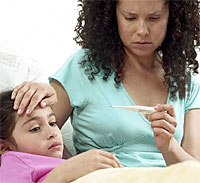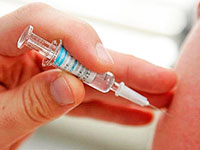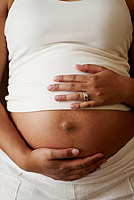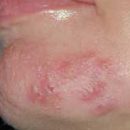What is diphtheria? What are the symptoms of diphtheria? How treatment and prophylaxis of diphtheria? Answers to the questions you will find in the article.
Content
Diphtheria
Diphtheria is an infectious disease. Cause diphtheria Corinbacteria. In place where diphtheria is being introduced, the inflammatory process begins with the formation of the film. In addition, the diphtheria is characterized by violation of the overall condition of the child and complications are possible.
It is possible to infected diphtheria from a person with a patient with this disease. The patient becomes contagious about 10 days after infection. The end of the contagious period depends on the time of removal from the body of the pathogen, which can be installed only by special methods (bacteriological examination). Ways of contamination of diphtheria: air-droplet (with a stream of inhaled air), with direct contact, less often through infected homework (dishes, linen, toys, books). Food flares are known (infected dairy products). Chest children are considered relatively immune, which is associated with immunity obtained through a placenta from mom. The most susceptible children from 3 to 7 years, in older age groups the number of susceptible decreases. The entrance for infection is the mucous membranes of the rotogling, nose, larynx, less often - the mucous membrane of the eyes and genital organs, as well as damaged skin, wound or burn surface, diallos and an unexplored umbrella. In place, where the diphtheria causative agent came, it begins to multiply and allocate the substance (exotoxin), which has a detrimental effect on the fabric and the body as a whole. Under the influence of exotoxin, cell death and film formation occurs.
Inflammation in diphtheria there are two types:
- Differentic inflammation occurs more often in the rotoglot, the film in these cases is tightly connected to the toed tissues and therefore it is difficult to separate from them.
The general violation of the condition of the child is associated with the penetration of exotoxin in blood.
What are the symptoms of diphtheria
Most often during diphtheria is affected by the rotogling, less often - nose, larynx, trachea. Rarely occurs diphtheria defeat of the eye, ear, genital organs, skin. The severity, the course, as well as the outcome of the disease depend on the level of immunity to exotoxin in a child by the time of infection.
Respiratory Difficulture (diphtheria croup). Difteria respiratory tract most often occurs in children aged 1 to 5 years. Diffex croup can be isolated (only the respiratory tract is affected) or proceed in combination with other lesions (for example, a combination of respiratory tract and rotogling or nose).
Depending on the propagation of the process, diphtheria chromium is distinguished (larynx diphtheria); Diffex croup common: diphtheria laryngotrachite (larynx and trachea) and diphtheria laryngotracybrehite (larynx, trachea and bronchi).
The disease begins with a moderate body temperature increase (up to 38 ºC), malaise, decline in appetite, dry cough, votes. In the future, all these signs grow up, the cough becomes parlor, rough, barking, a voice - hoarse, sipl. The duration of this period does not exceed 1 day (rare 2-3 days). In the future, there is a steady progression of symptoms with the gradual appearance of difficult, noisy breathing.
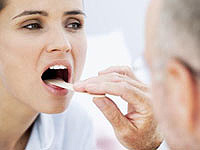 First, when coughing and excitement, the child appears an extended noisy breath that quickly passes, but the next bit of coughing appears again. Progress the previously emerged signs: the voice becomes sipl (right up to the loss of voice), and cough silent.
First, when coughing and excitement, the child appears an extended noisy breath that quickly passes, but the next bit of coughing appears again. Progress the previously emerged signs: the voice becomes sipl (right up to the loss of voice), and cough silent.
In the period of deterioration, the child refuses food, does not sleep, does not play, becomes restless and remains as in bed, and in his hands at mom, meswords. The face of the child expresses anxiety, fear. The scalp and face is covered with cold later, the lips have a blue shade. If in this period the child will not be assisted, he will start choking. The child at that moment as if calmed down, although the general state is extremely difficult. Apathy, drowsiness. Pale gray. Finger tips are becoming blue, palms and feet are cold to the touch, pupils are expanded. Temperature of the body falls below the norm. Surface breathing. There are involuntary urination and sampling of feces, loss of consciousness, convulsions. At this point, death may occur from the lack of oxygen.
With timely diagnosis and treatment, the process can be paused after 18-24 hours, then the opposite development of symptoms begins. The child calms down, breathing becomes smooth and deep, cough - softer, wet, rare. The voice is missing for a long time or remains a sip, normalizes only after 4-6 days.
Nose Diphthery. Nose diphteria is more common in children of early age and is possible even in newborns. The disease begins gradually. With a normal or slightly elevated body temperature and satisfactory general condition, the difficulty of nasal respiration appear, bleeding from one half of the nose. The release from the nose becomes mucous-purulent or purulent-bloody. On the skin at the entrance to the nose, on the upper lip, the cheek are formed. The defeat is one-sided, but with a long lack of specific treatment, the process can become bilateral.
Difteria in graft children is possible with a decrease in immunity due to a violation in the first or re-vaccination, or after infectious diseases. In the grafted children, rare complications of diphtheria and not marked deaths.
How does diphtheria prevention
The main importance in the prophylaxis of diphtheria has active immunization.
Primary vaccination is carried out from 3 months of age with an interval of 45 days three times. The first revaccination (re-vaccination) is carried out by a vaccine 18 months after the 3rd vaccination, the second - from 7 years, the third at the age of 14 and further after 10 years.
Contraindications for vaccination with distive diphtheria are practically absent. In children with light manifestations of ORVI, vaccination can be started immediately after normalization of temperature, and with moderate and severe acute infectious diseases - 2 weeks after recovery.
Possible complications and effects of diphtheria
The most characteristic complications from the cardiovascular system, nervous system and kidney.
The defeat of the cardiovascular system appears on the 5-20th day of the disease, usually after an acute period. The child's condition improved by this time deteriorates again, the pallor of the skin is intensified, the child becomes a capricious, irritable, refuses to eat. The bias appears. The severity of the child is aggravated by the emergence of fear of death. For the early diagnosis of this complication it is necessary to conduct an ECG study.
The defeat of the nervous system is characterized by the emergence of the diseases of the paresis in the 2nd week, less often paralysis. Most often there is paralysis of a soft sky. The child begins to accumulate while eating, the voice becomes bent, liquid food is poured through the nose. In addition, ptosis of the century may develop (the child cannot fully open the eye), squint, the impossibility to read.
Rarely, but on the 4th, 5th, 6th, 7th week of the disease, the paralysis of the entire motor muscles can develop: the power of the muscles of the hands and legs is reduced, the active movements are impossible, the skin becomes dry, the child can not sit, keep his head. With adequate treatment, para. is gradually passing, after 2-3 months the function of affected nerves is completely restored.
The defeat of the kidneys has no symptoms, but the violation of their functioning is detected in the study of urine.
Treatment and diagnosis of diphtheria
A characteristic feature for diphtheria is a dense whitish-gray film on the mucous membrane of the rotogling, nose, larynx.
In addition, bacteriological research is necessary (to clarify the causative agent of the disease) and the study of blood for the presence of antibodies to the causative agent of diphtheria.
The success of the treatment of diphtheria depends mainly on the timely administration of anti-diamiferous serum. Early administration and sufficient doses of serum provide a favorable outcome even with severe forms. In addition to serum apply antibiotics, inhalation. In severe cases, hormonal treatment is carried out, as well as with severe impaired self-breathing, hardware respiration is shown. In addition, treatment should be aimed at preventing complications.



